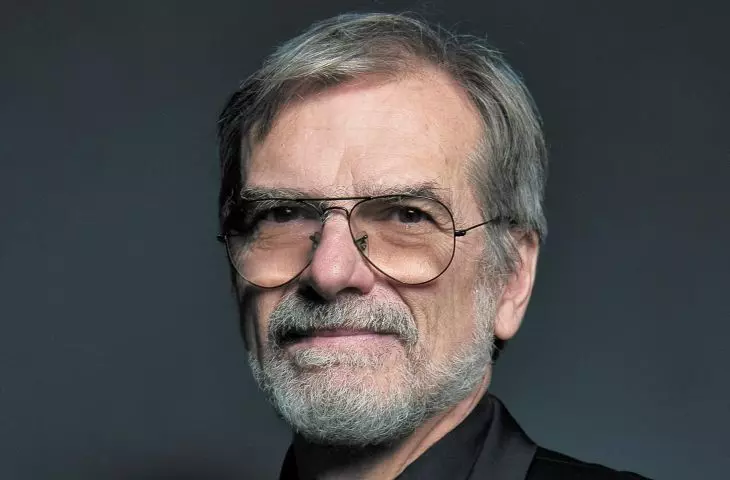Article taken from A&B issue 11|23
What role should MKUA play in the debate about the quality of urban space? Does it fulfill such a role at present?
One must start by saying that the quality of new urban space in Krakow is getting worse and worse. There are, of course, examples of newly created parks and squares that provide friendly public space, but one can also list a whole list of missed opportunities for its creation.
Devoid of definition of the surroundings of the Congress Center, the progressive degradation of the park surroundings of the Tauron Arena through the overdevelopment of residential buildings in its immediate vicinity, the lack of definition of such relatively newly created streets, such as Monte Cassino, Kapelanka, Pawia, which naturally predestined to the rank of urban avenues, and have become unfriendly traffic routes without the qualities of urban public space, oppressive to pedestrians. Large urban structures - Ruczaj, Campus 600-lecia UJ or Górka Narodowa - are examples of great mistakes in space management. The architecture of new buildings in Krakow is similarly bad. The most glaring example of this is the current construction of a 34-meter building on Wita Stwosza Street. This building, which is being constructed on the basis of a zoning decision from several years ago, will irreversibly disrupt the skyline of an area protected by a UNESCO World Heritage Site. Given the inertia of the office's actions, the results of the vouchers issued between 2010 and 2014, as well as the harmful findings of the Study of Conditions and Directions for Spatial Development adopted in 2014, will continue to appall us for a long time to come. Why this progressive regression? In terms of spatial management, the mayor has at his disposal the Department of Spatial Planning (WPP), the Department of Architecture and Urban Planning (WAiU), the Department of Strategy, Planning and Investment Monitoring (SI), as well as the position of Chief Architect of the City (GAM) and an advisory body: The Municipal Urban Planning and Architectural Commission (MKUA). The reason for the disaster, in my opinion, is the lack of cooperation between these units, coordination of their activities and supervision of their implementation.
The helplessness of local government in the face of spatial management problems has triggered a natural defensive reflex among residents - if you can't do it, we'll take matters into our own hands. These grassroots movements take very different forms: from groups protesting against investments in their neighborhoods, whose actions can be qualified as harmful to the public interest, to large structures such as the Rybitwy Cluster Foundation, the Association "Bieżanów Prokocim - STOP Flood", trying to present constructive, compromise proposals to the City. The Better Krakow Association is now becoming an influential forum for discussing the city's spatial problems among professionals and residents. WPP avoids substantive confrontation with community organizations, treating public participation as a necessary evil. It is worth realizing that urban planning methods have reevaluated before our eyes. We live in the knowledge and information age, so methods of communicating with people must be adapted to it. Local governments need to develop new planning tools and methods. According to the current provisions of the Law on Spatial Planning and Development, "public participation shall be conducted in a manner that allows active participation of stakeholders, [...] with respect for openness and efficiency of the proceedings [....], with the use of information developed in a non-specialist language about the spatial planning acts being drawn up, in particular explaining the consequences of the spatial planning acts being drawn up." As an architect and urban planner, I am not inclined to overestimate the public's role in urban planning, but I am in favor of strengthening the role of professionals. In the WPP there are fewer and fewer architects, fewer and fewer urban planners, and inertia and impossibility are justified by WSA rulings. The answer to the questions posed at the beginning could be: MKUA is in a weak position because that is the law. I am of the opinion that much can be improved on the basis of the current legislation. According to Art.8.3 of the current Law: "[...] the mayor shall appoint, [...] the municipal urban planning and architectural commission, as an advisory body, and shall determine, by bylaws, its organization and procedure of operation." So it is up to the mayor to determine what role the MKUA will play in the system. Much can be changed in the functioning of the MKUA without even changing its bylaws, according to which (§ 8.5): "The opinions of the MKUA are public." In practice, however, things are different. If MKUA's opinions were allowed to be published on the WPP's BIP website (which is currently blocked), the MKUA's stature, opinion-forming role and responsibility would increase significantly, reaching officials, councilors and all urban planning stakeholders alike. The scope of the MKUA's opinions depends solely on the mayor, who can make the application of its opinions mandatory.
There is room for improvement of the system on the basis of the existing law. What is needed is the president's trust in the GAM and MKUA, the restoration of the authority of these entities in the magistrate's office, the adaptation of the forms of communication to the demands of the times, and taking the public seriously. Using all existing opportunities with awareness and determination, much can be improved in the management of our common space.

















